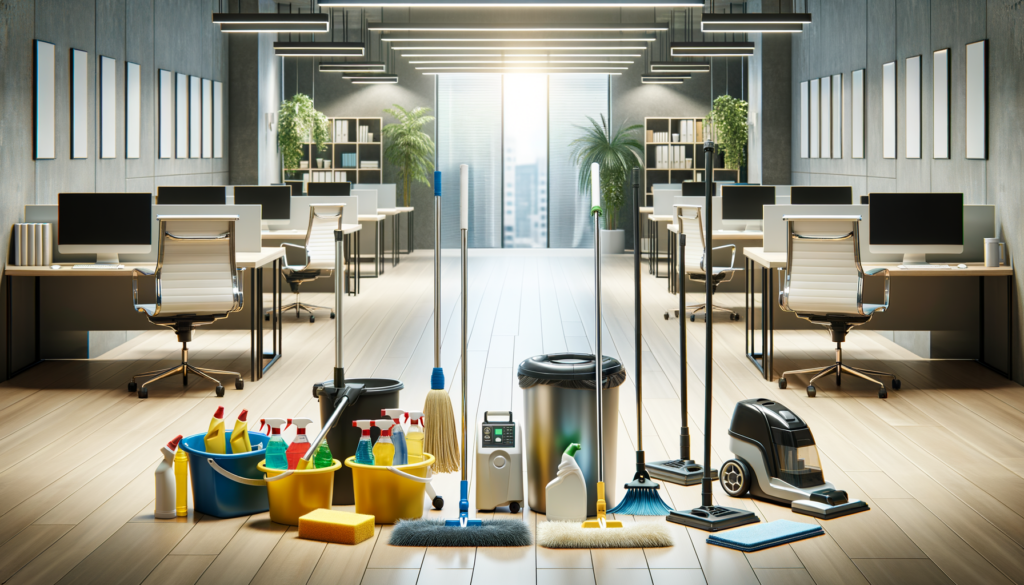The Technology & Gadgets Blog

The Vital Role of Office Cleaners in Modern Workspaces
The Importance of Office Cleaners
In today’s fast-paced work environment, the role of office cleaners cannot be overstated. They are the unsung heroes who ensure that our workspaces remain clean, organized, and conducive to productivity. With the increasing awareness of health and hygiene, especially in the wake of global health crises, the demand for professional cleaning services has surged. Office cleaners are responsible for maintaining a standard of cleanliness that not only meets but often exceeds expectations, creating a safe and healthy environment for employees.
Office cleaners contribute significantly to the overall well-being of employees. A clean office reduces the spread of germs and illnesses, leading to fewer sick days and higher productivity. Moreover, a tidy workspace can enhance mental clarity and focus, leading to improved job performance. Here are some key responsibilities of office cleaners:
- Regular cleaning and sanitization of surfaces and high-touch areas.
- Waste management and recycling.
- Maintaining clean restrooms and kitchen areas.
- Upholstery and carpet cleaning.
- Window and glass cleaning.
By performing these tasks efficiently, office cleaners ensure that the workplace remains a pleasant and inviting place for all employees.
Tools and Techniques Used by Office Cleaners
Office cleaners employ a variety of tools and techniques to maintain cleanliness and hygiene in workspaces. The choice of tools often depends on the size of the office and the specific cleaning requirements. Common tools include vacuum cleaners, mops, brooms, and dusters. In addition, office cleaners use specialized equipment such as carpet cleaners, steam cleaners, and floor polishers for deep cleaning tasks.
The techniques used by office cleaners have evolved over time, incorporating modern technology and eco-friendly practices. For instance, the use of microfiber cloths has become popular due to their effectiveness in trapping dust and bacteria. Cleaning solutions are now often chosen for their environmental impact, with a shift towards biodegradable and non-toxic products. This not only ensures the safety of employees but also aligns with corporate sustainability goals.
Office cleaners must also stay updated with the latest cleaning protocols, especially those related to pandemic response. This includes the increased frequency of sanitizing high-touch areas such as doorknobs, light switches, and elevator buttons. By adopting these advanced tools and techniques, office cleaners play a crucial role in maintaining a healthy workplace.
The Impact of Office Cleanliness on Employee Productivity
A clean office environment has a direct impact on employee productivity and morale. Research has shown that employees are more likely to feel motivated and engaged in a clean and organized workspace. Clutter and dirt can be distracting and can negatively affect concentration and efficiency.
Moreover, a clean office reflects positively on the company culture. It shows that the organization values its employees’ health and well-being, which can boost morale and job satisfaction. Employees are more likely to take pride in their work and contribute positively to the company’s goals when they feel cared for.
Furthermore, a clean office can enhance the company’s image to clients and visitors. First impressions matter, and a tidy, well-maintained office can convey professionalism and attention to detail. This can lead to increased trust and business opportunities. In summary, the role of office cleaners in maintaining cleanliness is integral to fostering a productive and positive work environment.
Challenges Faced by Office Cleaners
Despite their critical role, office cleaners often face several challenges in their line of work. One of the main challenges is the physical demand of the job. Cleaning can be labor-intensive, requiring long hours of standing, bending, and lifting. This can lead to fatigue and physical strain if not managed properly.
Another challenge is the need to work outside of regular office hours. Office cleaners often work early in the morning or late at night to avoid disrupting the workflow of employees. This can lead to irregular sleep patterns and affect work-life balance.
Additionally, office cleaners must deal with varying expectations and standards from different organizations. While some companies may prioritize eco-friendly practices, others may focus on speed and efficiency. Office cleaners must be adaptable and capable of meeting diverse requirements while maintaining high standards of cleanliness.
Despite these challenges, office cleaners continue to perform their duties with dedication and professionalism, ensuring that workspaces remain clean and inviting for all.
Future Trends in Office Cleaning
The office cleaning industry is constantly evolving, with new trends and innovations shaping the future of the profession. One significant trend is the increasing use of technology to enhance cleaning efficiency. Robotic cleaners and automated systems are becoming more common, allowing for more precise and consistent cleaning.
Another trend is the growing emphasis on sustainability. As companies become more environmentally conscious, there is a demand for green cleaning practices. This includes the use of eco-friendly cleaning products, energy-efficient equipment, and waste reduction strategies.
Moreover, the focus on health and hygiene is likely to remain a priority. The COVID-19 pandemic has heightened awareness of the importance of cleanliness, leading to stricter cleaning protocols and standards. Office cleaners will need to continue adapting to these changes to ensure the safety and well-being of employees.
In conclusion, the future of office cleaning looks promising, with advancements in technology and a continued commitment to sustainability and health. Office cleaners will remain essential in maintaining clean and healthy work environments, contributing to the overall success of organizations.









